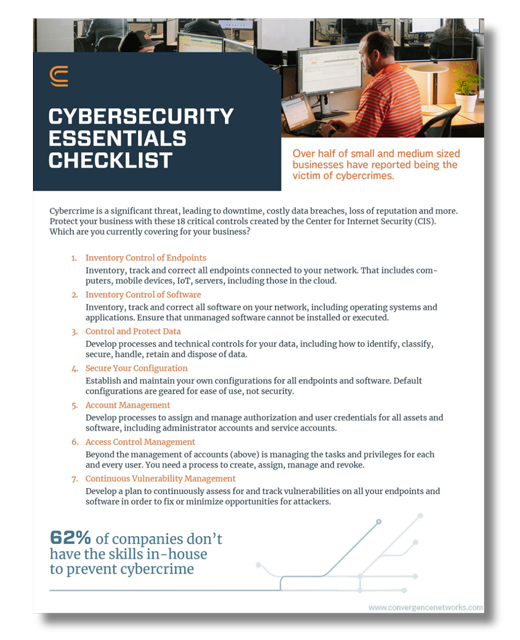October is here, and it’s not just about pumpkin spice lattes and Halloween decorations; it’s also Cybersecurity Awareness Month.
As we enter a new era of AI hacking techniques, employees have an even more critical role in defending against a cyberattack. From securing personal data to safeguarding business operations, the role of cybersecurity awareness requires everyone’s attention.
In addition to investing in the appropriate technologies, such as antivirus, managed detection and response and multifactor authentication an top tool in your arsenal needs to be user education. Phishing and social engineering tactics, both aimed at the end user, continue to be the top attack method for cybercriminals – because they work!
To prevent cybersecurity incidents caused by human error, provide users with relevant and tailored cybersecurity training, and test the effectiveness of your programs.
Start with Security Awareness Training
Security Awareness Training is crucial to prevent cyberattacks that exploit human error and negligence. By educating employees on the latest cyber threats and best practices, they can recognize and respond to potential threats effectively. To engage employees more effectively and make learning enjoyable, consider incorporating video training into your program.
Beyond educating employees on common cyber threats, Security Awareness Training should also help to instill a cybersecurity culture within your organization. When security becomes a core value, employees are more likely to take proactive steps to protect sensitive information, reducing the chances of data breaches.
Test The Effectiveness of Your Training Through Phishing Simulations
Phishing simulations are a crucial component of Security Awareness Training, allowing organizations to create realistic scenarios for employees to experience simulated phishing attacks. These simulations can take the form of emails or websites designed to trick recipients into revealing sensitive information or clicking on malicious links. When an employee falls for a simulated phishing attempt, it serves as an immediate learning opportunity. Ultimately Phishing Simulations help identify areas for further training and measure the effectiveness of your current training program.
Implement Annual Penetration Testing
While Security Awareness Training and Phishing Simulations are critical for strengthening your organization’s cybersecurity posture, there is another advanced step you can take to evaluate your security measures: Network Penetration Testing.
Penetration Testing, or pen testing, is an authorized simulated attack on your company’s IT infrastructure and staff with the intent to identify and exploit vulnerabilities by seeing where a malicious person may access your business. The goal is not to punish users who fail. Instead, it is to improve the overall security posture of your business through result driven insights and recommendations from certified cybersecurity experts.
Ultimately a Penetration Test provides a holistic view of your organization’s cybersecurity readiness, highlighting areas that need immediate attention and improvement. By conducting pen testing regularly, you can track your progress in enhancing your cybersecurity measures and adapt to the evolving threat landscape.
They allow you to prioritize your cybersecurity investments wisely. With the information you receive, you can focus on the specific areas that need strengthening, increasing the efficiency of your cybersecurity strategy.
A Comprehensive Approach to Cybersecurity
Cybersecurity Awareness Month serves as a reminder that cybersecurity is not just an IT department’s concern, but a responsibility shared by everyone in your organization. A comprehensive cybersecurity strategy should include Security Awareness Training, Phishing Simulations, and Penetration Testing.
Cybersecurity is a journey, not a destination, and this month is the perfect time to embark on it. If you are ready to start your cybersecurity journey, contact us














